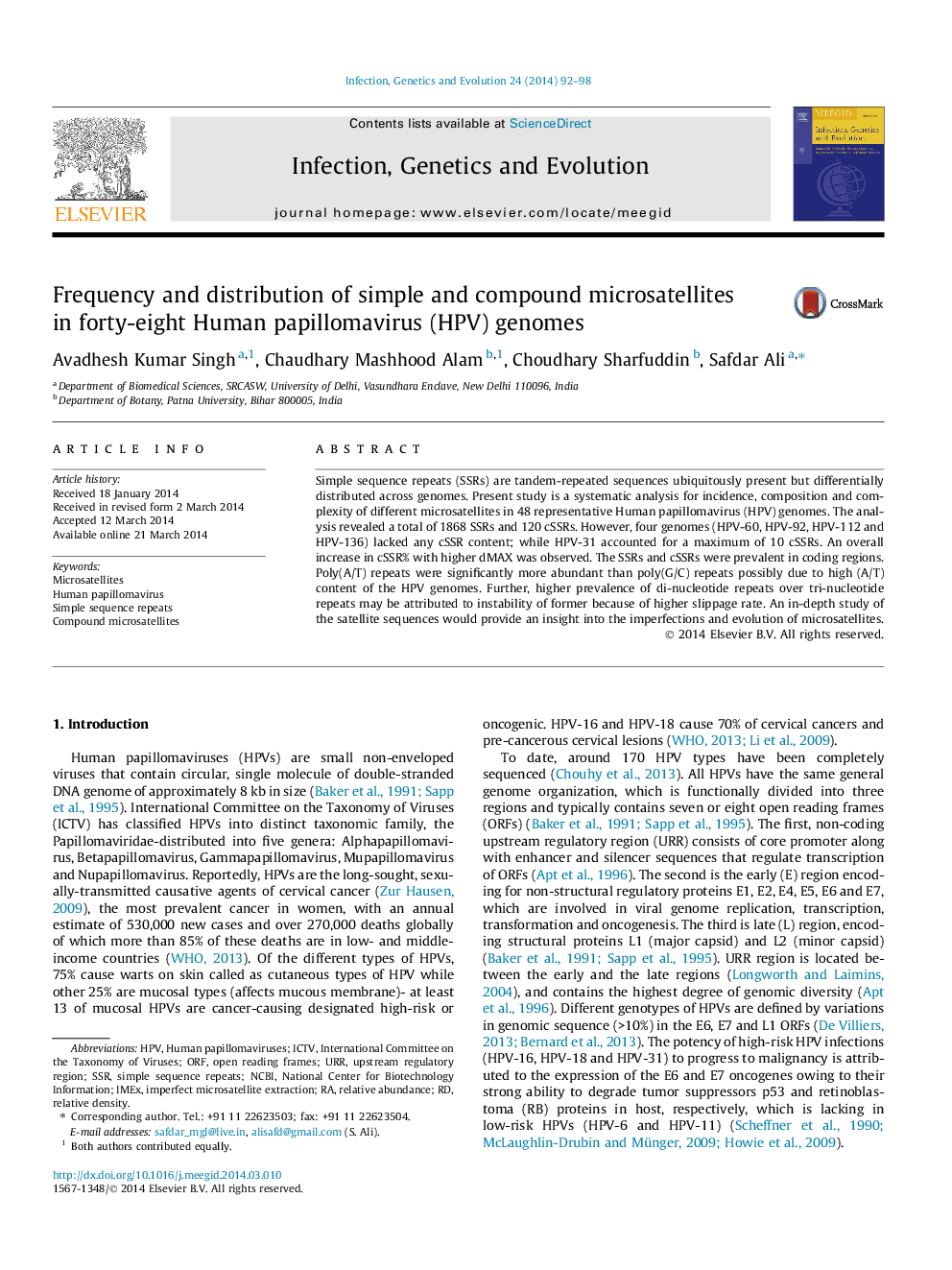| Article ID | Journal | Published Year | Pages | File Type |
|---|---|---|---|---|
| 5909704 | Infection, Genetics and Evolution | 2014 | 7 Pages |
Abstract
Simple sequence repeats (SSRs) are tandem-repeated sequences ubiquitously present but differentially distributed across genomes. Present study is a systematic analysis for incidence, composition and complexity of different microsatellites in 48 representative Human papillomavirus (HPV) genomes. The analysis revealed a total of 1868 SSRs and 120 cSSRs. However, four genomes (HPV-60, HPV-92, HPV-112 and HPV-136) lacked any cSSR content; while HPV-31 accounted for a maximum of 10 cSSRs. An overall increase in cSSR% with higher dMAX was observed. The SSRs and cSSRs were prevalent in coding regions. Poly(A/T) repeats were significantly more abundant than poly(G/C) repeats possibly due to high (A/T) content of the HPV genomes. Further, higher prevalence of di-nucleotide repeats over tri-nucleotide repeats may be attributed to instability of former because of higher slippage rate. An in-depth study of the satellite sequences would provide an insight into the imperfections and evolution of microsatellites.
Keywords
Related Topics
Life Sciences
Agricultural and Biological Sciences
Ecology, Evolution, Behavior and Systematics
Authors
Avadhesh Kumar Singh, Chaudhary Mashhood Alam, Choudhary Sharfuddin, Safdar Ali,
